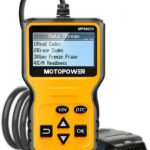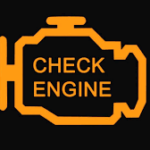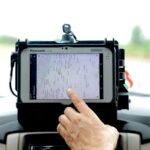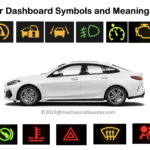For car lovers, the bond with their vehicles goes beyond the thrill of driving. It extends to understanding, maintaining, and optimizing their cars’ performance. To achieve this, having a set of diagnostic tools at your disposal is essential. These tools empower car enthusiasts to troubleshoot and diagnose issues, ensuring their rides run smoothly and efficiently.
In this guide, we’ll explore the must-have diagnostic tools for car enthusiasts, shedding light on their functionality and their vital role in identifying and resolving automotive problems.

OBD-II Scanners
Of all the top mechanics’ tools to consider for diagnostics, an OBD-II should be high on your list. An On-Board Diagnostics II scanner is a handheld or portable device that connects to your car’s OBD-II port. This standardized port is present in all cars manufactured since 1996 and serves as a direct link to your vehicle’s internal computer system. When connected to the OBD-II port, the scanner communicates with the car’s onboard computer. It retrieves diagnostic trouble codes (DTC) and real-time data on engine performance, emissions, and various sensors.
OBD-II scanners help identify the specific issue triggering the “Check Engine” light. Each DTC corresponds to a particular problem or system, allowing you to pinpoint the fault quickly. These scanners also provide real-time data on parameters like engine RPM, coolant temperature, oxygen sensor readings, and more. This data can help diagnose intermittent issues and monitor engine performance. Plus, OBD-II scanners are invaluable for emission testing, ensuring your car complies with environmental regulations.
Multimeters
A multimeter is a versatile tool for measuring electrical properties such as voltage, current, and resistance. Multimeters are used to troubleshoot electrical issues by testing circuits, checking voltage levels, and verifying continuity. They can also diagnose problems related to sensors, switches, and wiring.
Furthermore, they help identify open circuits (broken connections) or short circuits (unintended connections), which are common electrical issues. Multimeters can assess the condition of your car’s battery, too, including voltage levels and charging system performance.
Also Read:
- Top 5 Best Cordless Screwdriver
- Top 5 Best Digital Tire Pressure Gauges
- Top 5 Best Battery for Jeep Wrangler
Code Readers
Code readers are similar to OBD-II scanners but typically focus solely on reading and interpreting diagnostic trouble codes. They’re often more compact and affordable than full-featured scanners. Code readers connect to the OBD-II port and retrieve DTCs from the car’s engine control unit. They display these codes on a screen, allowing you to identify the underlying issues.
Code readers provide a rapid and straightforward method for retrieving DTCs without the advanced features of OBD-II scanners. They’re cost-effective alternatives for enthusiasts who primarily need code retrieval and don’t require extensive real-time data.
Infrared Thermometers
An infrared thermometer, also known as a laser thermometer, measures surface temperatures remotely. It does this by detecting the heat emitted from an object using infrared radiation. By pointing the infrared thermometer at various components of your car, you can quickly identify temperature irregularities. Elevated temperatures in specific areas can indicate potential issues such as overheating or poor insulation.
Infrared thermometers can detect overheating in components like brakes, tires, and electrical connections, allowing you to address potential problems before they become critical. They also provide a non-contact method for diagnosing temperature-related issues, eliminating the need to physically touch hot components.
Compression Testers
A compression tester is a tool used to measure the compression pressure within an engine’s cylinders. It helps evaluate the overall health and performance of the engine. The compression tester’s hose and gauge are connected to a spark plug hole in the cylinder. The engine is cranked, and the gauge records the compression pressure, which is then compared to manufacturer specifications.
Compression testers help diagnose engine problems, such as worn piston rings, cylinder head gasket leaks, and valve issues. Note, too, that regular compression tests can detect problems early, allowing you to address them before they cause severe engine damage.
Borescopes
A borescope is a flexible, slender camera attached to a long, thin tube. It allows you to inspect hard-to-reach or hidden areas within the engine, transmission, and other components. You insert the borescope into an access point, and the camera transmits images to a screen or device, enabling visual inspection of internal components.
Borescopes help uncover hidden problems within the engine, transmission, and other areas, such as damaged valves, piston rings, or blocked passages. They allow for non-destructive inspection without disassembling major components.
Fuel Pressure Testers

A fuel pressure tester measures the fuel pressure in the vehicle’s fuel system. It ensures that the engine receives the correct amount of fuel for optimal combustion. The tester connects to the fuel system, and the pressure gauge displays the fuel pressure. Deviations from the recommended pressure levels can indicate fuel system problems. Maintaining the correct fuel pressure is crucial for fuel efficiency and engine performance.
Car enthusiasts who take pride in maintaining and optimizing their vehicles recognize the value of diagnostic tools. These tools empower you to understand your car’s health, diagnose issues early, and make informed decisions about maintenance and repairs. With the right tools and knowledge, you can keep your beloved ride in top shape, ensuring every drive is a thrilling and trouble-free experience.








